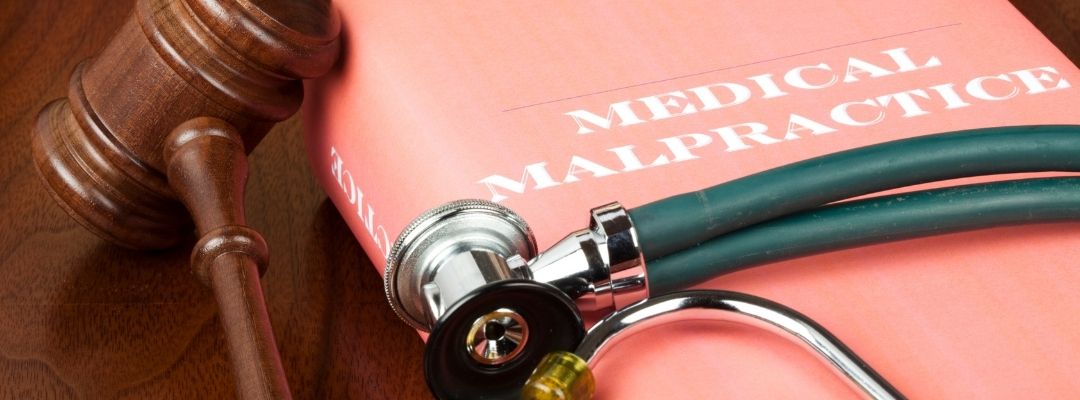When we seek medical treatment, we trust healthcare professionals to provide care that meets high standards. However, when that trust is broken due to negligence or careless mistakes, the consequences can be life-changing. Medical malpractice occurs when a doctor, nurse, or hospital fails to provide appropriate treatment, resulting in injury or harm to a patient. These cases are not just about mistakes; they’re about accountability and protecting patient rights.
Whether it’s a misdiagnosis, surgical error, or medication mistake, victims of malpractice deserve justice and compensation. Working with a Medical Malpractice Attorney or consulting a Medical Malpractice Lawyer in Maryland can help you navigate these complex situations. In this blog, we’ll explain what medical malpractice is, key elements of a claim, common examples, and the legal steps involved. You’ll also learn what types of compensation you may be entitled to and how a medical malpractice consultant or the Best Medical Malpractice Lawyer can support your case.
What Is Medical Malpractice?

Medical malpractice refers to situations where a healthcare provider causes harm to a patient through a negligent act or omission. This could involve errors in diagnosis, treatment, aftercare, or health management. Not every mistake is malpractice, but when substandard care directly results in injury, it may become a legal issue. Filing Medical Malpractice Claims involves proving that the healthcare professional failed to meet the expected standard of care. A skilled medical malpractice consultant can help assess the facts and determine if a claim is justified. Legal action can lead to fair compensation for pain, suffering, and financial losses.
Key Elements That Must Be Proven in a Medical Malpractice Case

When pursuing a medical malpractice claim, there are several critical elements that must be proven for the case to be successful. These elements serve as the foundation for holding healthcare providers accountable for negligence or substandard care. A Medical Malpractice Lawyer will help ensure that each of these components is thoroughly examined and supported with evidence. Below are the four key elements that must be established to prove a medical malpractice case:
1. Doctor-Patient Relationship
A doctor-patient relationship is essential in establishing that the healthcare provider has a legal duty to care for the patient. This relationship begins when a doctor agrees to diagnose, treat, or provide medical advice to the patient. It is not just about whether a doctor sees a patient, but whether the professional undertakes the responsibility to deliver medical care. Without this established relationship, there is no legal obligation for the doctor to follow the required standard of care, making it impossible to proceed with a medical malpractice claim. Proving this relationship is the first necessary step in any malpractice case.
2. Negligence Occurred
Negligence in medical malpractice cases refers to a healthcare provider’s failure to meet the standard of care expected of them. It goes beyond simple mistakes or errors in judgment—negligence occurs when a medical professional fails to act in a way that a competent, skilled provider would in similar circumstances. For example, if a doctor fails to order necessary tests or misinterprets diagnostic results, that may be considered negligence. Proving negligence is vital in a malpractice case, and it often requires expert testimony to show how the provider’s actions deviated from accepted medical practices.
3. The Negligence Caused Injury
To succeed in a medical malpractice case, it’s crucial to prove that the provider’s negligent actions directly caused injury to the patient. This means establishing a clear connection between the healthcare professional’s error and the harm suffered by the patient. For example, if a surgical mistake results in complications or further injury, you must prove that these issues would not have occurred if the proper procedures were followed. Demonstrating causation often requires expert medical testimony to show that the injury was a direct result of the negligence and not due to other factors.
4. The Injury Led to Specific Damages
The final key element of a medical malpractice case is proving that the injury resulted in specific damages. These damages may include medical costs, lost wages due to time off work, and emotional or physical pain. Additionally, non-economic damages such as mental anguish, reduced quality of life, or permanent disability can also be claimed. To win a malpractice case, the injury must have tangible and measurable consequences. You will need to document the financial and emotional toll the malpractice has taken on your life, which often involves gathering medical records, financial statements, and expert testimony.
Common Examples of Medical Malpractice
Medical malpractice can happen in many ways. Even highly skilled professionals may make errors that lead to serious outcomes. Below are some of the most common forms of malpractice that may warrant consultation with a medical malpractice Lawyer in Maryland.
- Misdiagnosis or Delayed Diagnosis: Failing to diagnose a condition like cancer or heart disease in time can prevent critical treatment. This often leads to a worsened medical condition and may support a malpractice claim.
- Surgical Errors: Mistakes made in the operating room, such as wrong-site surgery or leaving instruments inside the body, are grave errors. These incidents often require additional procedures and long-term care.
- Medication Errors: A wrong dose or prescribing the wrong drug can cause harmful reactions. In some cases, medication mistakes can be fatal or lead to long-term complications.
- Birth Injuries: Improper care during labor can lead to serious injuries to the baby or mother. Conditions like cerebral palsy may result from failure to act quickly in an emergency.
- Anesthesia Mistakes: Errors with anesthesia can cause brain damage, nerve injury, or death. These mistakes are particularly dangerous because they often go unnoticed until it’s too late.
- Lack of Informed Consent: Doctors must explain the risks of a procedure. If a patient suffers harm without understanding those risks, it may be considered malpractice.
Legal Process for Medical Malpractice Cases

Filing Medical Malpractice Claims involves multiple steps. It’s not a simple lawsuit—it requires expert input and careful documentation. Hiring a Medical Malpractice Attorney early on is critical.
Step 1: Consultation with a Medical Malpractice Attorney
The first step is to meet with a Medical Malpractice Attorney to review the facts of your case. The attorney will examine medical records, timelines, and symptoms to assess if your situation qualifies as medical malpractice.
Step 2: Gathering Medical Records
Your attorney will help collect all relevant medical documents, including treatment notes, prescriptions, and hospital reports. These records are essential to proving when and how the alleged medical malpractice took place and how it impacted your health.
Step 3: Obtaining Expert Opinion
A licensed medical expert will evaluate the case to confirm whether the care provided breached accepted standards. Their opinion is often required in court and strengthens your claim by showing that negligence directly caused your injury.
Step 4: Filing a Formal Complaint
If your attorney determines you have a valid case, they will file a formal legal complaint. This document outlines the facts, identifies the defendants, and specifies the compensation you’re seeking for the medical malpractice you experienced.
Step 5: Negotiation or Trial
Many cases are resolved through out-of-court settlements. However, if no agreement is reached, your Medical Malpractice Lawyer Maryland will take the case to trial and present evidence before a judge or jury to seek fair compensation.
Damages You Can Claim in a Medical Malpractice Case
Victims of medical malpractice can recover various types of damages. An experienced Medical Malpractice Lawyer in Maryland can help evaluate your losses and build a strong claim.
- Economic Damages: These include direct financial losses such as medical bills, treatment costs, and lost income due to time off work.
- Non-Economic Damages: You may also be entitled to compensation for pain, suffering, emotional distress, and reduced quality of life.
- Punitive Damages: In rare cases where the provider acted with gross negligence or intentional harm, courts may award punitive damages to punish the wrongdoer.
Conclusion
Medical malpractice can have devastating effects on a person’s life. If you or a loved one has been harmed due to negligent medical care, don’t suffer in silence. Understanding your rights and the legal process is essential. Seeking help from a Medical Malpractice Attorney, a medical malpractice consultant, or a trusted Medical Malpractice Lawyer in Maryland can give you the support needed to pursue justice. From misdiagnosis to surgical errors, the system should be held accountable for lapses in care. The best lawyer in Maryland will fight to ensure you receive fair compensation and help you rebuild after a traumatic experience. Your health and rights matter—make sure they are protected.


